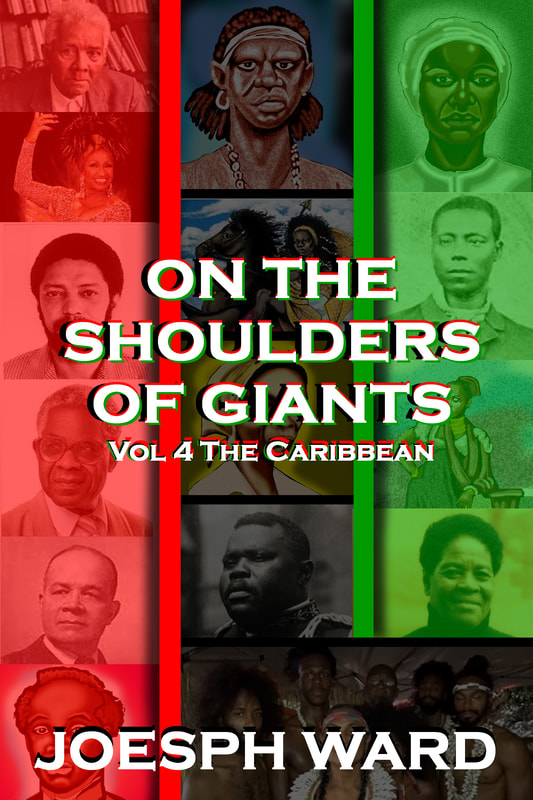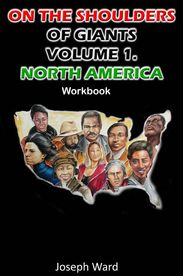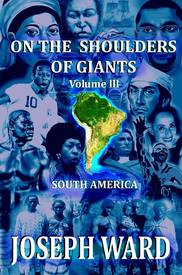|
On August 3rd, 1832 Edward Wilmont-Blyden was born in St. Thomas Danish West Indies, what is now known as the U.S. Virgin Islands. He was the son of parents who were free blacks from the Igbo Tribe in Nigeria. As a studious young man Blyden caught the attention of Reverend John P. Knox who was an American Pastor of the St. Thomas Protestant Dutch Reformed Church. Knox became the mentor of Blyden and encouraged him to polish his oral and writing skills. Impressed by Knox, Blyden choose to follow in his footsteps and became a minister. In 1850 Blyden was joined by the wife of Reverend Knox on a trip to Knox’s Alma Mater the Rutgers Theological College. The college refused to admit Blyden as a student because he was black; he also failed to gain admittance in two other colleges because of his race. Knox encouraged Blyden to move to Liberia which was an upstart colony in Africa, he thought Blyden would be able to use his skills better there. Blyden sailed to Liberia in 1850 and became involved in the development of the colony. Blyden was editor for the Liberia Herald and also wrote his column “A Voice From Bleeding Africa” from 1855 to 1856. He edited for newspapers in Nigeria as well as Sierra Leone, later he edited at The Negro, and The African World. Blyden was acquainted with the American Colonization Society which allowed him to be published in their African Depository and Colonial Journal. In 1861 Blyden became a professor at Liberia College teaching Greek and Latin. In 1880 Blyden was selected as President of Liberia College a position he held until 1884. He also served as Ambassador for Liberia to Britain and France; he also traveled to the U.S. to speak to blacks about what he was doing for Liberia. During his speeches in the U.S., Blyden was offering freedom by way of returning to Africa. His ideas were not received well by African-Americans. Blyden used Ethiopianism a concept inspired by the Zionist movement, built on the belief that if African people returned to Africa our conditions would improve. He would later incorporate the concept of Islam into his ideology, stating that it was a more proper religion for African-Americans and Americo-Liberians. Because of his heavy involvement in the development of Liberia, Blyden was named the Liberian Secretary of State in 1862, and Minister of Interior in 1880. He ran for president in 1885 but lost the race. Blyden became the director of the education of Muslims in Freetown, Sierra Leone from 1901 to 1906. He encouraged as many Africans as possible to choose Islam during this time. Blyden married Sarah Yates while living in Liberia; they had three children while they were together. He would later meet and engage in a relationship with Anna Erskine and they would have five children together. Blyden became known as “The Father of Pan-Africanism” because of his work in Liberia and Sierra Leone and his writings. His best known piece of writing is titled Christianity, Islam and the Negro Race; which he wrote in 1887. This piece helped to promote his ideas of Islam as a better religion for African people. He believed that Christianity had a debilitating effect on the Psyche of African people. His book caused a stir in Britain because of Blydens race and his content. Edward Blyden died on February 7th, 1912 in Freetown, Sierra Leone and was buried at the Racecourse Cemetery. Blyden is credited as the first to spread ideas of Africans around the globe uniting and moving back to Africa to enrich and empower Africa. Though he was met with resistance and racism, Blyden continued his ideas of Africans freeing themselves. He felt that if we have our own place to exit in the world, why would be beg for a place in someone else’s world. Mr. Edward Wilmont-Blyden, we stand on your shoulders. J.A. Ward. Click below to view the Edward Wilmont-Blyden video
0 Comments
Aprille Ericsson-Jackson was born April 1, 1963, in Brooklyn, New York in the Roosevelt projects, she was the oldest of four and destined for greatness. She was a product of the busing system and attended P.S. 199 in Brooklyn where she excelled in her academics. Ericsson-Jackson found a love for math and science in junior high school. She won second place in a science fair and passed all of her exams with a 90% or better. She excelled in her studies and became an active member of the school band, science club, honors club, and girls’ basketball team. Ericsson-Jackson had to take entrance exams for the top technical high schools in New York; she aced the exams but decided not to attend a school in New York. Ericsson-Jackson attended the Cambridge School of Weston in Cambridge, Massachusetts and lived with her grandparents. At her new school Ericsson-Jackson excelled in her academics and also joined the girls’ basketball and softball teams for her school and city wide teams. During the summer of her junior year she was accepted into a minority engineering and entrepreneurial program. This was a tough six week program that prepared minority students for the engineering, science and, entrepreneurial fields. Her next step was graduating high school with honors and attending the Massachusetts Institute of Technology (M.I.T.). She graduated from M.I.T. with a bachelor in Aeronautical/Astronautical Engineering, and was involved in some very prestigious research projects. Ericsson-Jackson was able to assist in developing a fiber optic laser gyroscope; she helped create a database for EVA neutral buoyancy data that was calculated at the NASA Johnson Space Center. Her senior project was to research Manned Mars Mission crew systems for interplanetary vehicles. Ericsson-Jackson developed a love for manned space mission’s and applied for NASA’s astronaut program but was placed under medical review because of previous health concerns. Her next step was to attend Howard University where she earned a Master of Engineering and a Ph.D. in Mechanical Engineering. She became the first female and first African-American female to receive a Ph.D. in engineering from Howard University. While attending Howard, Ericsson-Jackson researched practical design procedures for future orbiting space structures. She received funding via fellowships and grants from several sources such as the Pacific Telesis Foundation. Ericsson-Jackson held an internship at NASA Goddard Space Flight Center, which helped her land a job with the flight center after receiving her Ph.D. While working at the flight center she worked on several projects such as the X-Ray Time Explorer, the Tropical Rain Forrest Measurement Mission, and the Microwave Anisotropy Probe. She also has become a lecturer to minority women encouraging them to join her field. She also created a pipeline for children who may not have the opportunity to purse engineering. In 1998 Ericsson-Jackson received the Women in Science award for the best female engineer in the federal government. She received recognition at the Black Engineers Award Conference; she also won the Goddard Honor Award for Excellence in Outreach. She was named as one of the 18 women who will change the world by the Women’s Network. Aprille Ericsson-Jackson excelled in a field and time when women were only expected to take care of their homes. She defied social, gender, racial and, cultural barriers to become exactly what she wanted to be. Mrs. Aprille Ericsson-Jackson, we stand on your shoulders. J.A. Ward. view the Aprille Ericsson-Jackson video below Thomas Sankara was born on December 21, 1949 in Yako, French Upper Volta, French West Africa, which is modern day Burkina Faso. Sankara attended high-school in a city named Bobo-Dioulasso; after he graduated his parents wanted him to become a Roman Catholic Priest. Sankara entered the military in 1966 at the age of 19, at the age of twenty he was shipped to Madagascar for officer training. While in training he witnessed several uprisings against the government in 1971 and 1972, which would help shape his future. He began reading the works of Carl Marx and Vladimir Lenin; there influence on him would show in his views towards politics. In 1972 Sankara returned home to Upper Volta but his military life would follow, he was involved in a border war against Mali in 1974. His show of military brilliance would earn him fame, but he would later reject his fame and involvement in the war as a result of a paradigm shift. He would become commander of the Commando Training Center in the city of Po. Later that year he would meet Blaise Compaore in Morocco, they would later meet with Henri Zongo and Jean-Baptiste Lingani to form a secret organization the “Communist Officers’ Group.” In 1981 Thomas was appointed Secretary of State for Information in the Military; he would resign in 1982 because he was opposed to the views of the regime. The residing governmental regime was over thrown and Jean-Baptiste Ouedraogo became president of the country. Thomas Sankara was named Prime Minister in January of 1983 but was dismissed in May of 1983. He was also placed under house arrest along with Henri Zongo and Jean-Baptiste Lingani; their arrest would lead to an uprising of the people in Upper Volta. Thomas Sankara became president of Upper Volta in 1983 as a result of a coup d’état which was organized by Blaise Compaoré. As president Sankara was inspired by Fidel Castro, Che Guevara, and Jerry Rawlings. His ideology focused on riding his country of corruption, restoring his country, preventing famine, and promoting education and health. Sankara’s regime suppressed the power of tribal chiefs to receive tribute payment and obligatory labor. In 1984 Sankara renamed the country from Upper Volta to Burkina Faso, which means “the land of the upright people.” He changed the name of the country in the two major languages of the country; he also changed the flag and the national anthem. Sankara made women’s rights one of his priorities; he banned female genital mutilation, forced marriages, and polygamy. He would also appoint women to positions within his government and encouraged them to work outside the home. He would also encourage pregnant women to stay in school. Sankara’s idea was to promote overall equality for men and women within his country. The Sankara led government would be the first African Government to recognize AIDS as a major epidemic to Africa. Sankara became popular with the people of Burkina Faso by making equality between the people and the government a priority. Sankara was named the “African Che Guevara” because he emulated his personal style and politics. In 1987 Thomas Sankara was killed in coup d’état by his colleague Blaise Compaoré who betrayed Sankara. Compaore reversed Sankara’s polices and quickly accepted financial aid from the World Bank. Sankara worked hard to ward off the World Bank and establish a self-sufficient African nation in Burkina Faso. Thomas Sankara was a national hero and a true leader of the people; his sole purpose was to uplift his people at all cost. Governmental leaders who value the people they represent and resist corruption do not exist frequently. Thomas Sankara we proudly stand on your shoulders. J.A. Ward. click below to view the Thomas Sankara Video In 1583 Anna Nzinga was born to King Kiluanji and her mother Kangela within the Ndongo and Matamba Kingdoms of Angola. She was given the name Nzinga which means to twist or turn, because she was born with her umbilical cord wrapped around her neck. Nzinga’s mother was foretold that Nzinga would become a wise and powerful queen in her future. Her father greatly enjoyed her presence and carried Nzinga everywhere he went. She was able to observe how her father governed the Kingdom; she also was able to accompany her father in war. Nzinga lived during the Atlantic slave trade and her land was being threatened by the Portuguese. One of Nzinga first displays of leadership and superior intelligence was when she accompanied her brother at a peace conference. They were attempting to persuade the Portuguese Governor Mendes de Vasconselos to withdraw the fortress of Ambaca from Ndongo land, return fellow countrymen who had been kidnapped and enslaved, and command the Imbangala mercenaries to cease their services. Nzinga was successful in her pursuits, all of her terms were agreed upon and a peace treaty was created. During the negoations the Portuguese Governor Correia de Sousa offered Nzinga a seat on a floor mat attempting to subordinate her. With royal grace Nzinga declined the floor mat then ordered one of her servants to get on the ground on all fours, and then Nzinga conducted the negations sitting on the back of her servant. The Queens actions showed the governor that she was not lower than he was. Nzinga would later convert to Christianity, it is said that she made the conversion to help strengthen her alliance with the Portuguese. Nzinga and her people would learn that the promises of the Portuguese were empty promises. They did not keep their word despite the negoations and the peace treaty. Cracking under the pressure of the Portuguese, Nzinga’s brother committed suicide and Nzinga became regent of her land because her brother’s son Kaza was too young to rule. In 1641 she aligned with the Dutch to help her fight the Portuguese. She gained a victory over the Portuguese in a battle at Ngoleme in 1644. In 1646 she would gain another victory in a battle at Kavanga. While gaining a victory one of her sisters was captured as well as records of her alliance with the Congo. Her sister was drowned by the Portuguese for her helping correspond with the Congo. Nzinga gained another victory over the Portuguese army with the help of Dutch reinforcements, her next step as to take the Portuguese capital of Masangano. The Portuguese was able to recapture the city of Luanda from the Dutch, which caused Nzinga to retreat to Matamba and continue her resistance from there. Nzinga was able to fight off the Portuguese from capturing her land until she reached her sixties. In 1657 she signed another peace treaty with the Portuguese, after the wars she began to rebuild her nation from years of battle. On December 17th, 1663 Queen Nzinga died at the age of eighty, leaving behind a kingdom weary from battle. After her passing the Portuguese over ran her kingdom eventually taking them over as part of the slave trade. Queen Nzinga was the definition of Beauty, class, wisdom, royalty, courage and leadership. She was able to hold off a superior army and maintain the freedom of her people and their culture. Queen Nzinga gave the Portuguese more than they bargained for, as well as set an example of the power of a woman. Queen Anna Nzinga, we stand on your shoulders. J.A. Ward. Click below to view the Queen Anna Nzinga video |
Details
Categories
All
Click Here to join our mailing list
|
Contact Us: |
Connect With Us |
Site powered by PIT Web Design

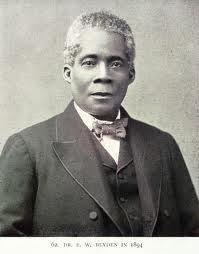

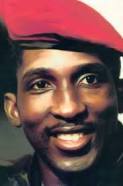
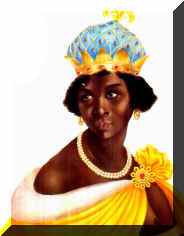
 RSS Feed
RSS Feed
